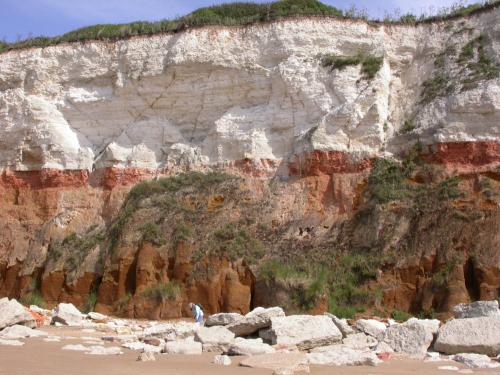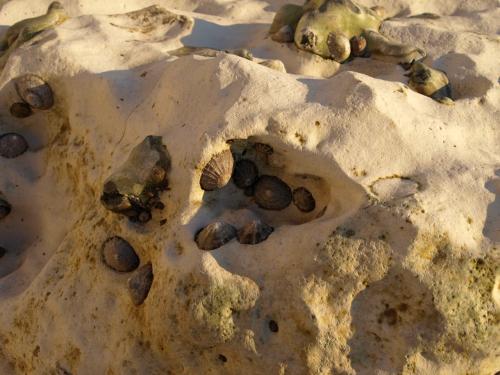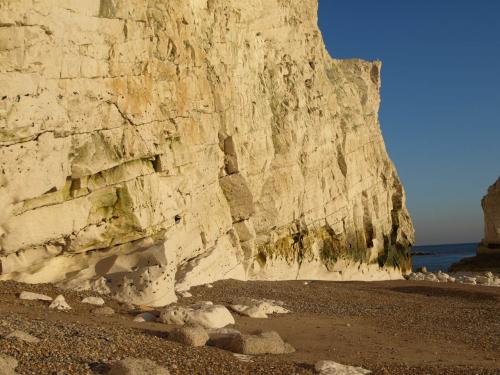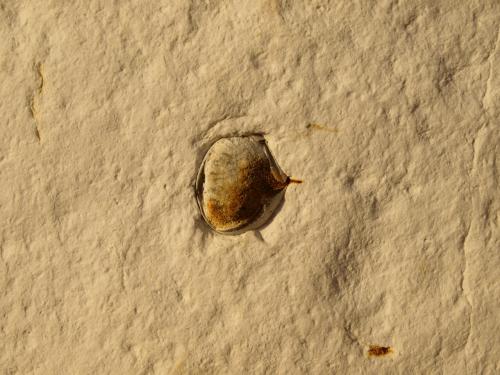chalk

- Location: Hunstanton, North Norfolk coast.
- Date Taken (dd-mm-yy): June 2010
Dramatic colour banded cliffs at Hunstanton. The dark, orange brown sandstone is overlain by a thinner layer of red chalk which is overlain by a creamy white pure chalk. These are all Cretaceous in age.

This work is licensed under a Creative Commons Attribution-No Derivative Works 2.5 License.

- Location: Seaford, Sussex, UK
- Date Taken (dd-mm-yy): February 2008
As well as the more usual wind and water, the Limpets are also eroding the chalk.

This work is licensed under a Creative Commons Attribution-No Derivative Works 2.5 License.

- Location: Seaford, Sussex, UK
- Date Taken (dd-mm-yy): February 2008
The South East coast of England is dominated by chalk cliffs like these.

This work is licensed under a Creative Commons Attribution-No Derivative Works 2.5 License.
.preview.JPG)
- Location: Seaford, Sussex, UK
- Date Taken (dd-mm-yy): February 2008
Nodular bands of flint in the chalk in Upper Cretaceous chalk.

This work is licensed under a Creative Commons Attribution-No Derivative Works 2.5 License.
_1.preview.JPG)
- Location: Seaford Sussex UK
- Date Taken (dd-mm-yy): February 2008
Tabular flint in chalk.

This work is licensed under a Creative Commons Attribution-No Derivative Works 2.5 License.

- Location: Seaford, Sussex, UK
- Date Taken (dd-mm-yy): February 2008
Although it may look like a brachiopod this is a sponge. Many flint nodules form around sponges in this Cretaceous chalk. The organic material in the sponge forms a "focal" point for silica to migrate to during diagenesis. The structure of the sponge can be seen close up. This nodule is about 25 mm across.

This work is licensed under a Creative Commons Attribution-No Derivative Works 2.5 License.
 GeologyRocks
GeologyRocks